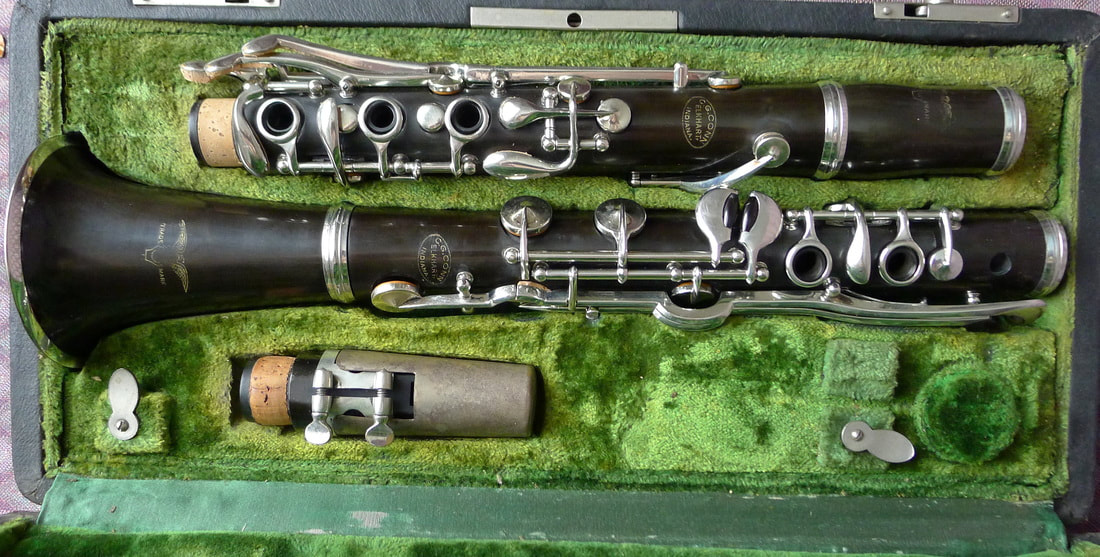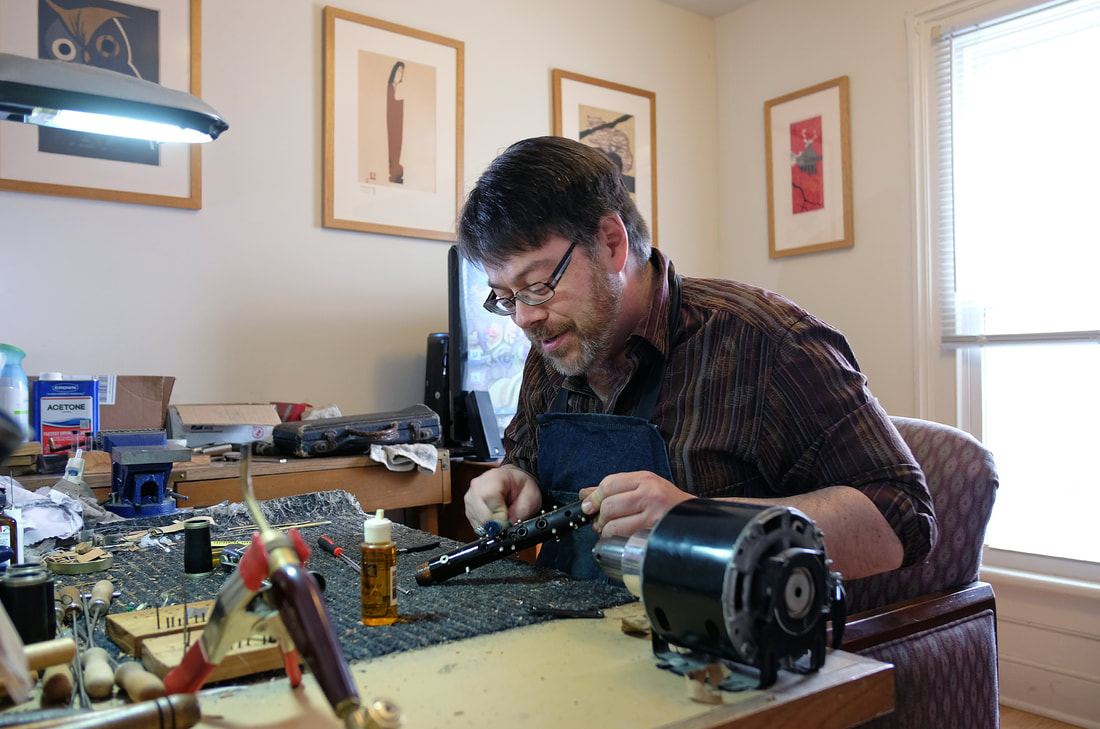|
A local man called this week and said he had a Conn clarinet that his aunt gave him in the 1940's and wondered if I could restore it for his daughter to use in community band? I said, 'Sure, bring it on in', expecting maybe a 424N or, if he was lucky, a 444N.
When they arrived it turned out to be this 1925 4N Albert system in hard rubber: We were all surprised! I'm still amazed at the number of old Alberts that continue to turn up in closets and attics after all these years. I explained to them that a few of the fingerings would be a bit different but, as the instrument plays at Bb LP, there was no reason she couldn't give it a whirl if so inclined. They said 'Yes, go ahead' so here, a few days later, is the finished article. Its a nice player, with comfortable keywork and a full Albert tone, and I look forward to giving it back to them today - she's so excited!
0 Comments
 OILING Most of the instruments that I receive are pretty dry, and the first thing I do, after disassembly, is coat them inside and out (not forgetting the tone holes) with a good grade of bore oil. Then they get a few days to rest, with re-applications of oil until they stop absorbing. Rehydrating the wood helps cushion it against cracking due to moisture absorption, thermal shock, etc. and gives it a better chance at a new life... BUFFING With solid nickel alloy or nickel plated keys, there is no way to remove 40 years worth of greenish-grey, crusty oxidation other than buffing - period: I don't want to see one more horn with silver polish residue under the keys! A high speed buffer with white lime compound will return a key to brand new in seconds, and take years off the wood body as well - just watch those toneholes and logos, and try not to break any springs... TONE HOLE REFACING On older wood clarinets, toneholes suffer from a variety of problems. Years of adjustment and overhauls (especially careless ones) can leave small nicks and gouges around the rim of the toneholes, causing tiny leaks. It might not seem like a big deal, but multiply that by every tonehole on the clarinet… As the instrument ages, it dries and shrinks: as it heats and cools, it flexes. A tonehole that was cut flat into a curved surface 50 or 80 years ago has often developed all kinds of minor warps which, when they meet a perfectly flat pad surface (if there is such a thing!) fail to contact evenly all the way around, causing yet more sealing issues. The only way to effectively solve these problems is to re-cut the rim to its original contour.A special set of cutters is used to remove just a few thousandths of an inch of material, eliminating nicks and rendering the tonehole flat again, allowing for the best possible seal. To be continued....  Many techs who routinely repair only band grade instruments have neither the time, the knowledge, nor the specialized tools to complete all these tasks, and little incentive to acquire them: At the $60 an hour that the average shop currently charges (plus supplies), a $600 bill wouldn't be out of the question and few customers are discerning or serious enough to make this kind of commitment to their instrument. Trying to explain why all this is necessary frequently got me looks suggesting that I was peddling Snake Oil: We are, after all, a nation of bargain hunters, and quality work is no bargain! However, once your older instrument has been thoroughly overhauled in this manner, you can be assured that, not only is it playing its best, but that it will require little maintenance other than oiling, adjustment and occasional pad replacement for years to come! Below I include some technical definitions for the curious and foolhardy... Swedging/Countersinking As clarinets age, the keys get loose from wear and dirt: metal is actually ground away at each end where it rubs against its post! Once the problem becomes severe enough, pads will no longer align properly with toneholes (causing leaks) and the whole instrument will have a loose ‘clackety’ feel. Swedging, which is the technique used on keys with a through rod, is the process of compressing the metal at the end of the key to extend it and bring it back tight against the post. For solid keys that pivot on a screw, we countersink: slightly deepening the hole in the post until the point of the screw once again makes firm contact with the key and keeps it from shifting. Properly done, it can restore an “almost new” feel to the mechanism, help eliminate leaks, and quiet the instrument... To be continued |
Archives
February 2024
AuthorThe Licorice Shtick Blog is the creation of the Vintage Clarinet Doctor, a Winston Salem, NC based woodwind instrument repair shop specializing in vintage and antique clarinets, saxophones, and the occasional flute. Categories |


 RSS Feed
RSS Feed